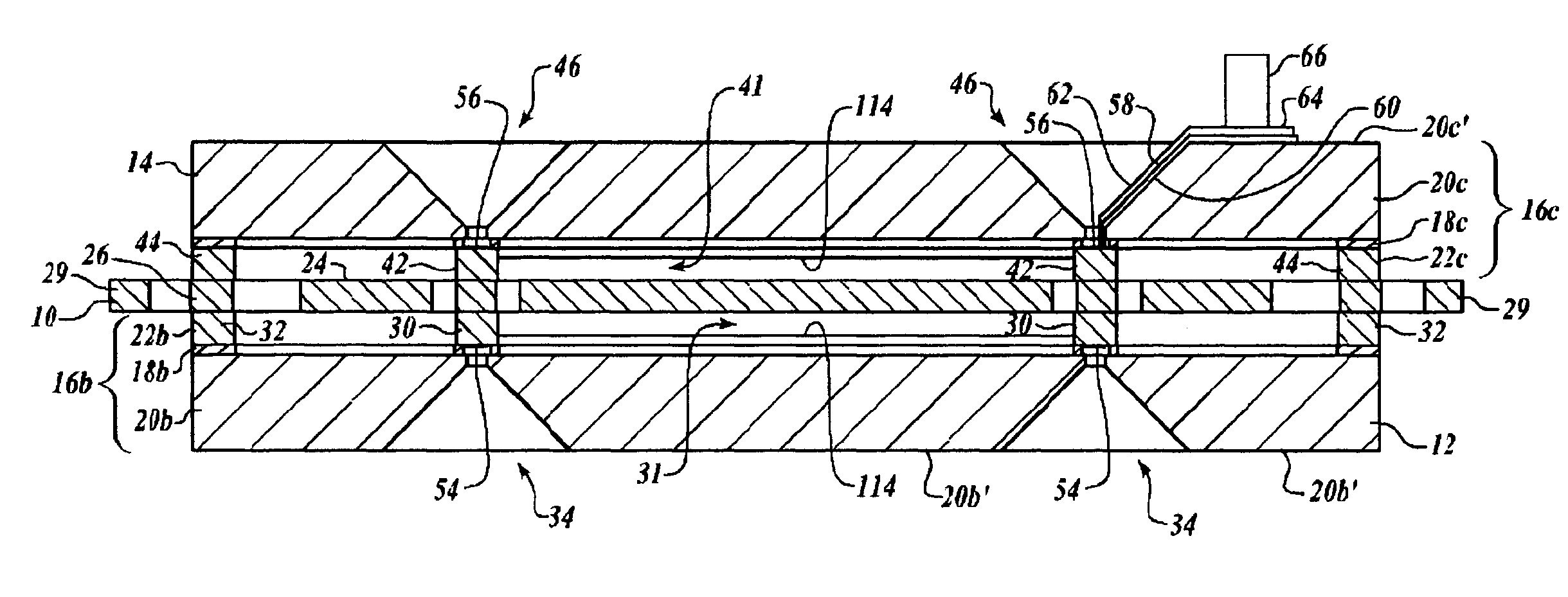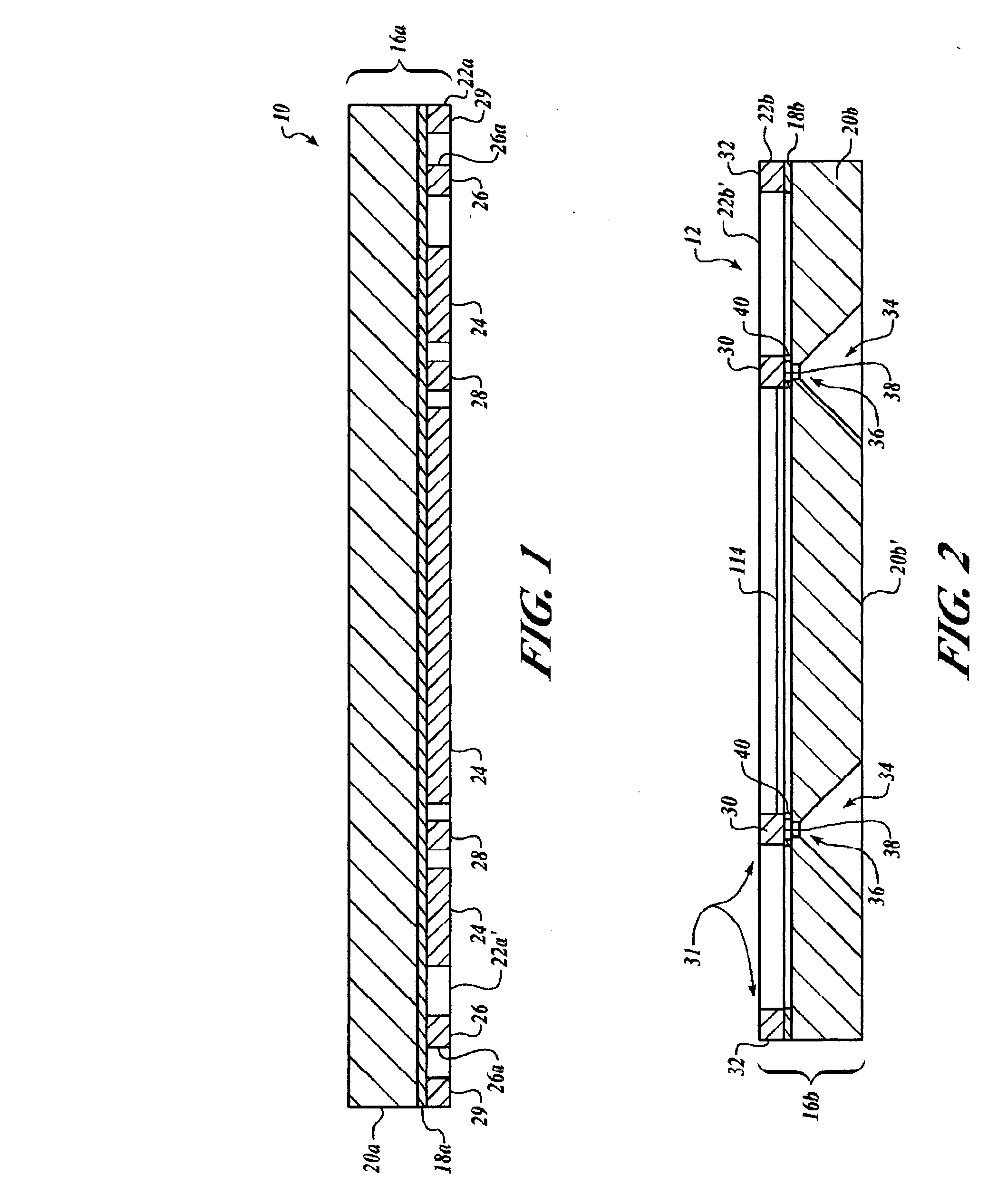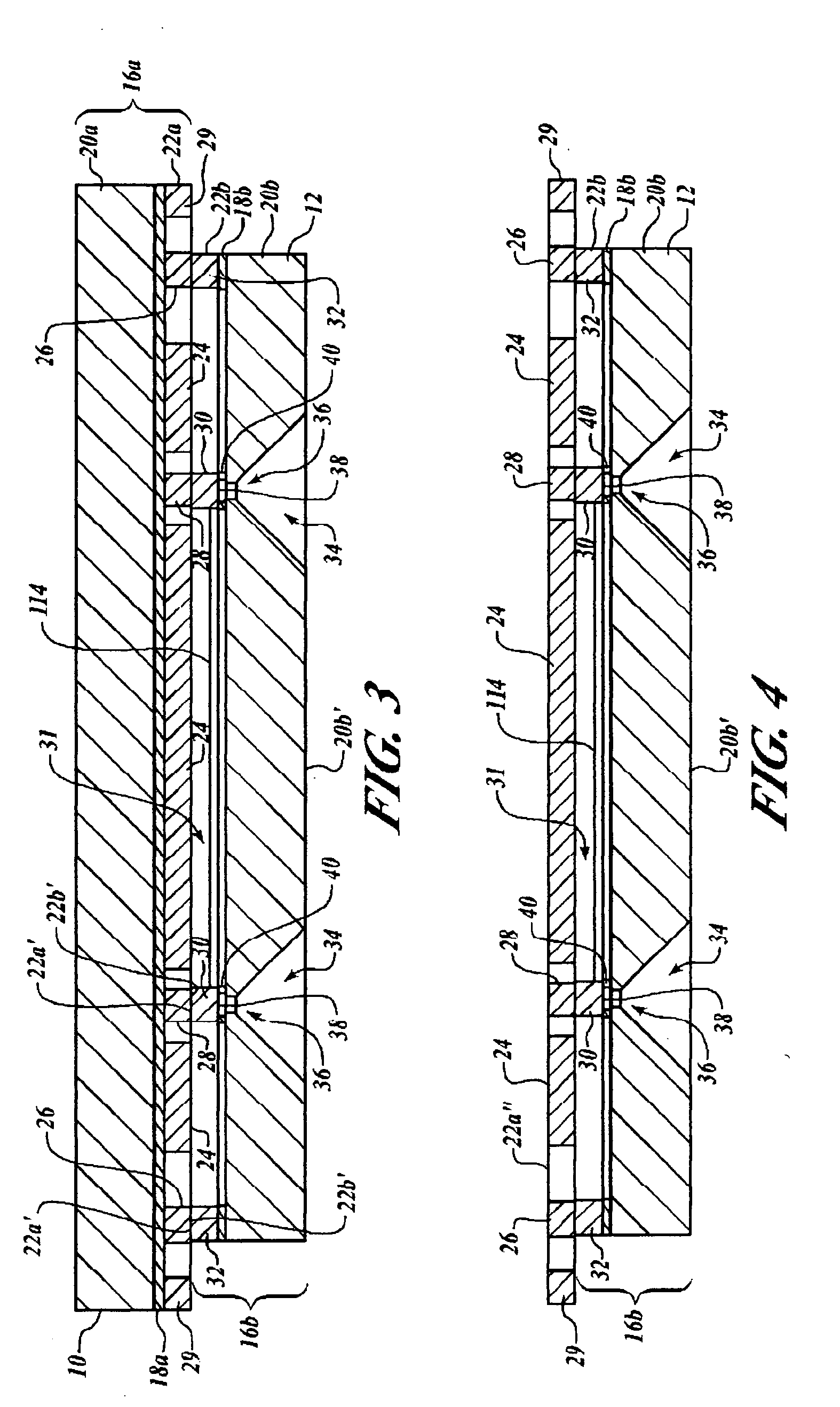High performance MEMS packaging architecture
a packaging architecture and high-performance technology, applied in the field of micromachined sensor devices and methods, can solve the problems of limiting the level of performance achievable, mechanical die-stack, poor thermal conductivity, etc., and achieve the effect of reducing the effect of force applied, reducing the magnitude of force, and maximizing the utilization of common mode error cancellation
- Summary
- Abstract
- Description
- Claims
- Application Information
AI Technical Summary
Benefits of technology
Problems solved by technology
Method used
Image
Examples
Embodiment Construction
[0054] In the Figures, like numerals indicate like elements.
[0055] The Figures illustrate the method of the present invention for fabricating a sensor architecture based on bulk machining of Silicon-On-Oxide (SOI) wafers and fusion bond joining that produces a symmetric, nearly all-silicon, hermetically sealed, microelectromechanical system (MEMS) inertial device 1, such as an electrostatic accelerometer or Coriolis rate gyro device, operated in either open-loop or closed-loop modes.
[0056] The architecture of the present invention includes a device sensor mechanism 10 and first and second silicon cover plates 12, 14 bonded to opposite faces of the device sensor mechanism 10. The device sensor mechanism 10 and silicon cover plates 12, 14 are formed in different SOI wafer elements of a type that is generally commercially available. Each wafer element includes a buried dielectric layer having a thickness of from about 0.5 to 2.0 microns that is sandwiched between a relatively thicker...
PUM
 Login to View More
Login to View More Abstract
Description
Claims
Application Information
 Login to View More
Login to View More - R&D
- Intellectual Property
- Life Sciences
- Materials
- Tech Scout
- Unparalleled Data Quality
- Higher Quality Content
- 60% Fewer Hallucinations
Browse by: Latest US Patents, China's latest patents, Technical Efficacy Thesaurus, Application Domain, Technology Topic, Popular Technical Reports.
© 2025 PatSnap. All rights reserved.Legal|Privacy policy|Modern Slavery Act Transparency Statement|Sitemap|About US| Contact US: help@patsnap.com



